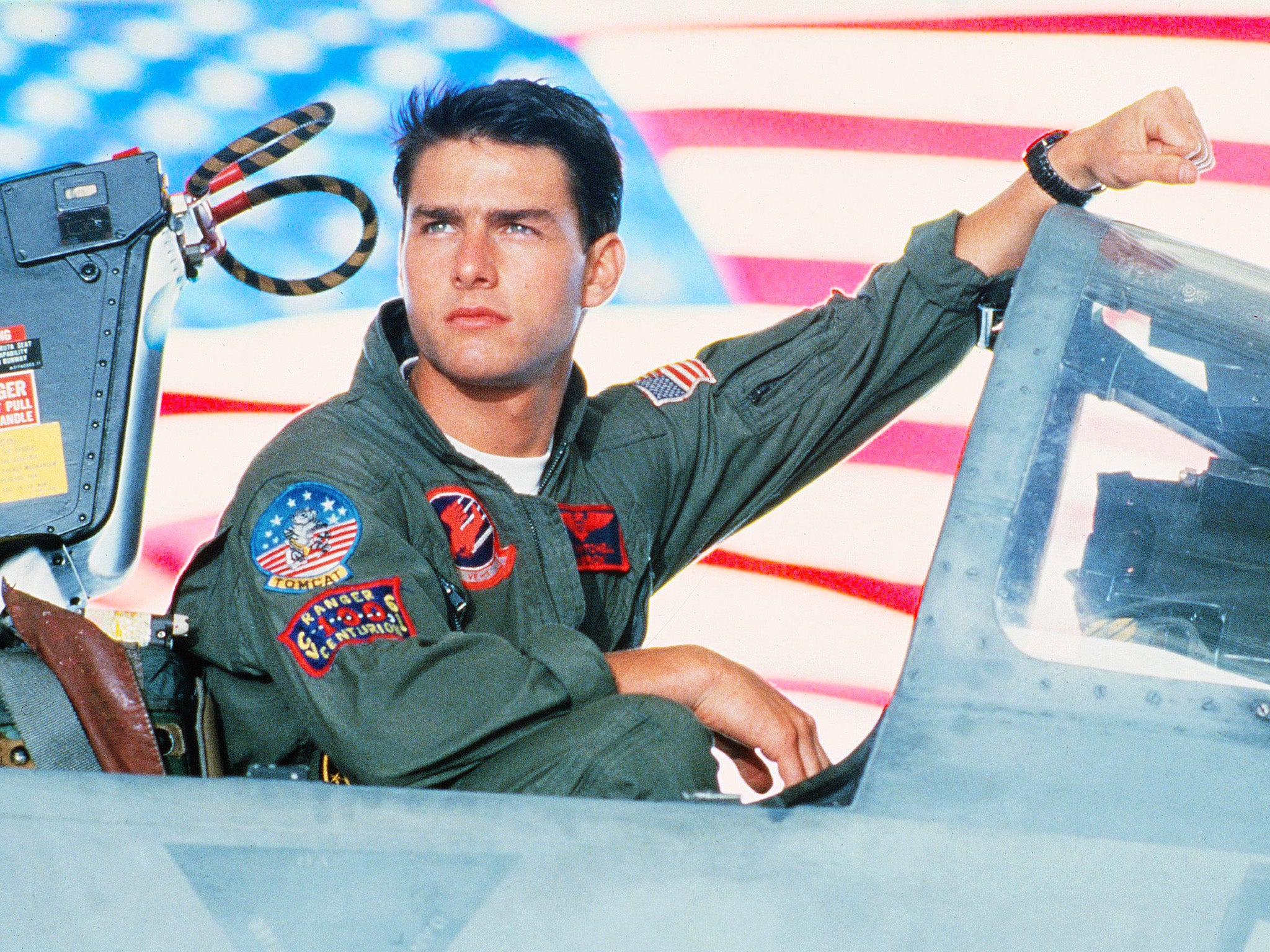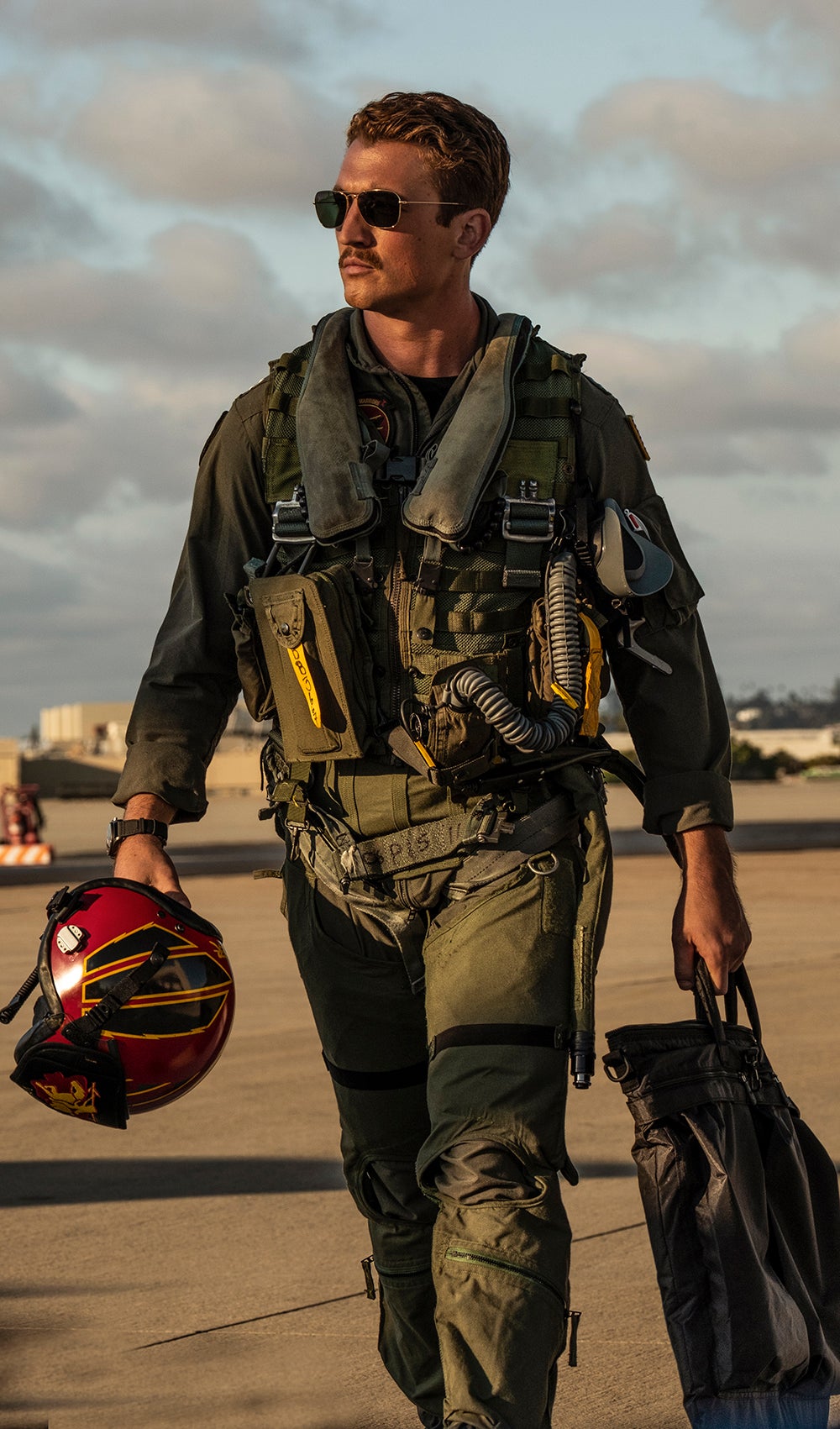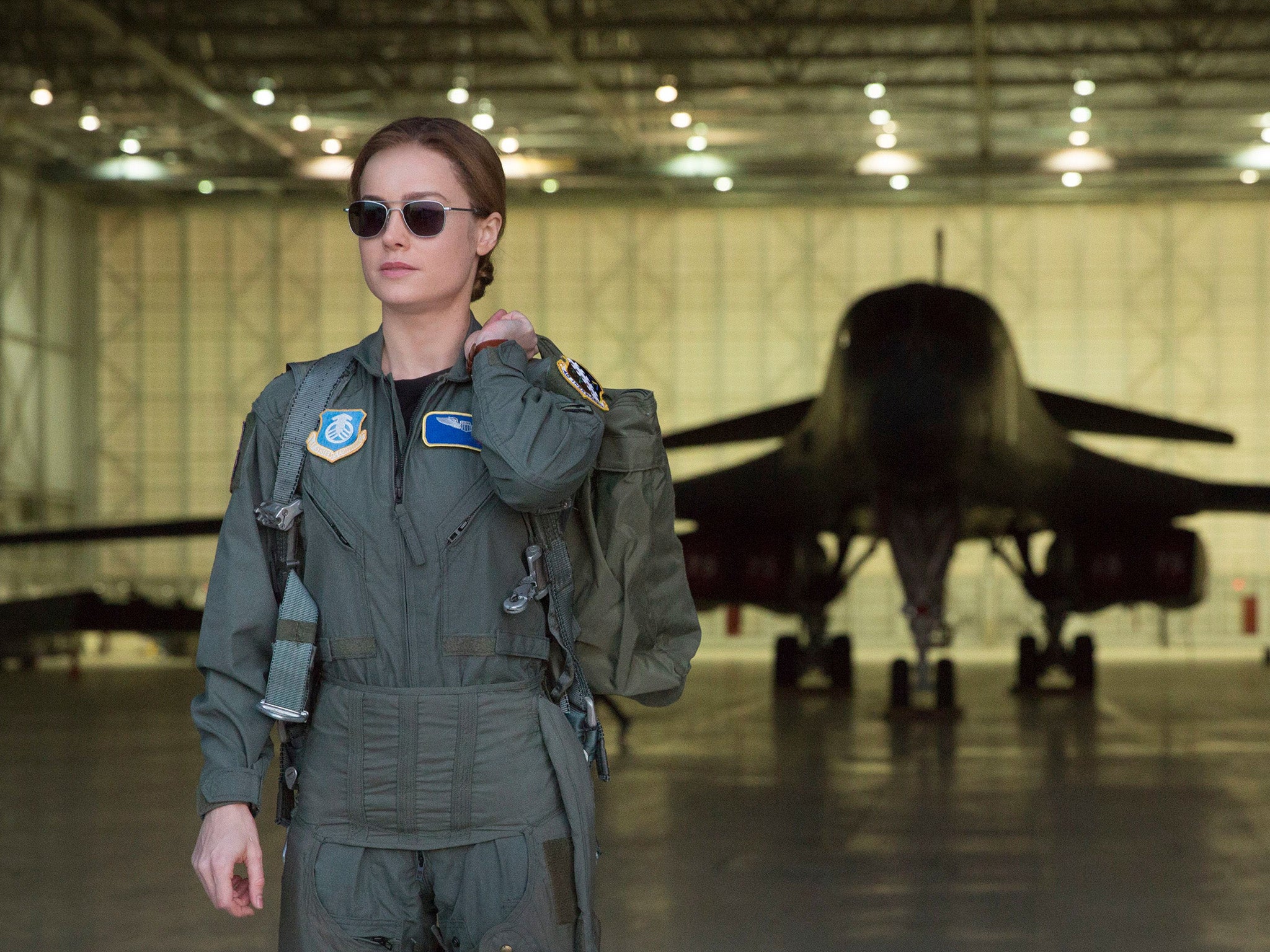Propaganda with your popcorn: How cinema became the military’s key promotional tool
With ‘Top Gun: Maverick’ arriving in cinemas, Joe Ellison explores the discreet emergence of state-sponsored messaging in everything from Russian epics and ‘Captain Marvel’ to the army ads that seem to always play before your film starts

This week, the critically acclaimed Top Gun sequel swoops into cinemas at a time when US diplomacy might as well be stuck in the Eighties: Russia is on the march, the threat of nuclear war hangs over geopolitics like a toxic cloud, and Tom Cruise is back in the cockpit as Pete “Maverick” Mitchell, looking barely a day older than when he first donned the aviators back in 1986. Its all-American cool and fetishistic patriotism also reinforces a very modern trend in film the world over: cinema as a military recruitment tool.
More than 800 Hollywood films have been heavily supported by the US military over the last century, stretching as far back as the 1927 Best Picture Oscar winner Wings and the misfiring The Green Berets (1968), a schmaltzy White House-approved Vietnam War picture released at the height of the conflict. However, it wasn’t until we first heard the call signs of Goose, Jester and Iceman in the original Top Gun that this “quid pro quo” really hit the target: the film’s combination of dizzying aerial combat, thumping MTV-friendly soundtrack and shirtless beach volleyball helped US Navy recruitment shoot up 500 per cent following its release. Directed by the late Tony Scott, this testosterone sandwich of a film was such a successful bit of marketing that recruitment booths were installed in cinemas to capitalise on the hype.
The prospect of a similar PR boost via Top Gun: Maverick couldn’t have arrived at a better time for US top brass, who currently face some of their biggest recruitment challenges for decades. In April, state senators were told how the US army faced a “war for talent” amid shrinking battalion numbers, echoing admissions from air force officials that its own pool of qualified candidates had fallen by half since the beginning of Covid. Things haven’t looked rosy for the navy either, which declared in February that it was 5,000 to 6,000 sailors short at sea. A month before these remarks, Chinese vessels tracked a US warship in the South China Sea, warning it of “serious consequences” after it supposedly strayed into illegal waters.
Little wonder, then, that Uncle Sam once again welcomed Paramount Pictures with open arms for Maverick, granting director Joseph Kosinski and his crew all-access passes to highly sensitive naval facilities, including a Nimitz-class nuclear-powered aircraft carrier. World-class technicians provided cast members with top-level fighter pilot training right down to seat ejection, and actors went up in the skies as production teams placed cameras inside F/A-18 Super Hornets.
In return – as per the original film – the navy was given script approval. This might also explain why Top Gun: Maverick never goes into detail about its villains – instead, audiences are simply informed that “the enemy” is a rogue state hellbent on uranium enrichment. Let’s assume it rhymes with “Diran”.
Another coup for the Top Gun: Maverick production team was the chance to work directly with the American weapons manufacturer Lockheed Martin and their secretive Skunk Works division. Keyboards were set alight when one of the film’s early trailers teased the Darkstar hypersonic aircraft, a modern twist on the Cold War-era SR-71 Blackbird. The plane wasn’t a real prototype, but China wasn’t to know that. According to Top Gun producer Jerry Bruckheimer, the Chinese moved one of their spy satellites in order to photograph the prop plane during filming, believing it may have been genuine. “They thought it was real,” he told Sandboxx News. “That’s how real it looks.”

In a world of ever-increasing technological one-upmanship, and where Russian state TV matter-of-factly simulates the destruction of the UK via a radioactive tsunami, information (and even disinformation) is king. The bigger the audience, the bigger the message, making cinema’s expanding global box office the ideal place for more subterfuge and showmanship.
In fact, the Department of Defence’s (DOD) backing of Top Gun: Maverick will be chump change compared to some of the figures China has been pumping into state-sponsored cinema of late. The Korean War film The Battle at Lake Changjin, released in 2021, was funded almost entirely by Beijing’s propaganda department to the tune of £160m, duly becoming the highest-grossing film in China’s history with a £730m haul. It even spawned a sequel – Water Gate Bridge – which topped the domestic box office this year. But it also faced stiff competition from another piece of anti-American propaganda wrapped up as a fantastical Korean War film: Sniper, about real-life legendary Chinese sharpshooter Zhang Taofang, who racked up 214 confirmed kills of US soldiers in less than 40 days. Tellingly, the film’s tagline read: “Send them all back to hell!”
With the sheer number of tickets sold, it’s clear there’s a thirst for this sort of revisionist entertainment. In Russia, cinema audiences have not exactly been turning down big screen nationalistic offerings themselves. Take 2019’s T-34, a bombastic fictional drama concerning a group of Russian POWs who escape from a Nazi concentration camp using a Soviet T-34 tank. It’s currently the third-highest-grossing Russian film in history. Every bit as pointed as the phallic arsenal regularly paraded up and down Red Square, the film was made as part of a Kremlin programme to reinstall pride among young people. As seen in the lead-up to Russia’s invasion of Ukraine, President Vladimir Putin has been keen to hammer-and-sickle home the Soviets’s victory over Nazi Germany as much as possible.
While certainly not as heavy-handed as their international counterparts, many of this century’s highest-grossing Hollywood blockbusters were produced in cooperation with the Pentagon, including Avatar, the Transformers franchise and many Marvel films. In the leadup to 2008’s Iron Man, a real-life Captain America – Captain Christian Hodge, the military’s handler on set – excitedly told his superiors that “the air force is going to come off looking like rock stars”. Iron Man may be a comic book adaptation, but perhaps we should have known that a film about an American weapons contractor who designs a super-suit in order to travel to Afghanistan and kill terrorists was a little on-the-nose. Somehow, though, this unlikely partnership between the MCU and the DOD largely managed to fly under the radar for the best part of a decade.
That was, of course, until 2019’s Captain Marvel. Starring Brie Larson as an ace air force pilot given otherworldly superpowers, it was denounced in many quarters for playing out like a military recruitment film. And rightfully so in many respects. The film is unashamedly “Team America”: the US air force helped out with script research, locations and technical advice, and commissioned recruitment ads spotlighting female air force pilots that played before the film in US cinemas. At the film’s world premiere, serving female pilots dotted the red carpet and a flyover was performed by an elite squadron. It’s no coincidence that the military was looking to diversify its talent pool at the time, but for all the film’s feminist overtones, it nonetheless opened a can of worms for Disney.

Closer to home, UK cinemas have also been viewed as fertile ground for military recruitment in recent years, with armed forces adverts now as synonymous with a trip to the multiplex as sticky floors and expensive pick‘n’mix. “I’m Kevin, I was born in a provincial town, but I was made on this massive aircraft carrier in the Baltic Sea,” declares the typical sort of voiceover. Whether they stem from the Royal Navy or the Marine Commandos, each one seems to be more cinematically crafted than the last. In 2018, the British army’s “This Is Belonging” campaign saw bespoke ads targeting peopled aged 16-24 rolled out for blockbusters inside specially 4DX-fitted cinemas. Advertising company Digital Cinema Media said that the collaboration “provided a perfect creative fit – enabling the army to drive awareness, message take-out and consideration in a unique, engaging and clutter-free environment”.
Who knows? Perhaps when you settle down to watch the return of Maverick gunning it in mid-air you’ll feel compelled to hop in a fighter jet yourself. Or maybe you’ll just feel nostalgic for a CGI-lite blockbuster that feels like a real throwback. Either way, when there is increasing appetite for action films and defence contracts to win, expect the silver screen to play a leading role in military strategy for the considerable future. Naval chiefs haven’t lost that loving feeling just yet.



Join our commenting forum
Join thought-provoking conversations, follow other Independent readers and see their replies
Comments